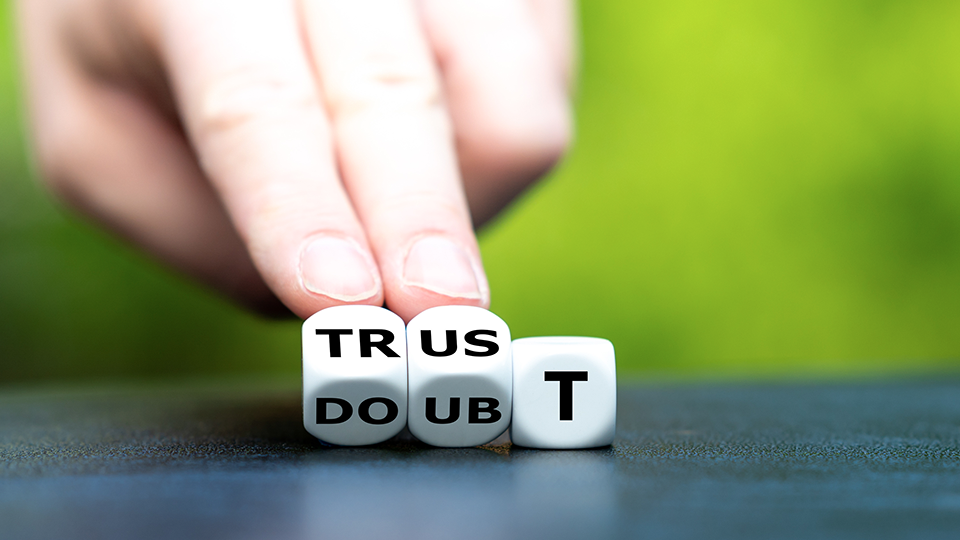We often oversimplify the world and introduce false binary oppositions to feel more certain, safer and thus more empowered in our lives. Feeling certain is one of our medicines against anxiety. By contrast, uncertainty is one of the hardest states of being we experience. Naturally we try to avoid it, sometimes at any cost. Professor Geert Hofstede, in his culture-comparative intercultural research, introduced uncertainty avoidance as one of the six key cultural dimensions which drive our social interactions.
Conspiracy theories are typically anchored in our need to combat uncertainty by simplifying reality. They generate straight-forward plausible explanations for why something happened, usually involving one deliberate enemy. Here is an example: the world’s governments produce viruses in laboratories to control the world’s population. All you need to eliminate the torturous uncertainty of not knowing the cause of pandemics is a belief and an absence of doubt. So you just take that path. You eradicate any doubt and you believe. You trade truth for certainty, if often unconsciously. Being certain is grounding; knowing the truth – not always.
“I don’t like certainty because faith without doubt becomes dogma”, reflected the thoughtful Elif Shafak at the launch of her 10 Minutes 38 Seconds in This Strange World at The Conduit in London in 2019. She spoke extensively about the importance of nurturing doubt to avoid becoming dogmatic in how we decode the world. Shafak had been concerned about the prevalent societal rhetoric becoming increasingly binary, powering societal polarisation. She argued that being uncertain meant that our views are malleable which gives more credence to facts.
Journalism is a mirror of societal values and tendencies. It too frequently falls victim to binary thinking and oversimplification, in part because it is easier to reflect news when the story appears simple, with a clear situation, problem and (occasionally) solution. As a result, journalism is failing to reflect the world's complexity and nuance, leaving the stories of large groups untold.
Inclusive journalism is one solution to this undue simplification of reality.
Doubt and inclusive journalism are intrinsically linked enabling an exploration of the world in a nuanced way. Reporting diverse perspectives is founded on the belief that stories are multi-layered and thus require different viewpoints to be told truthfully and well. Reflecting the diverse and complex world we live in involves a tradeoff between speed of of reporting and accuracy.
To reflect complex realities truthfully and accurately, journalism should consider evolving in the following three ways:
#1. Move away from reductive and binary storytelling. A senior editor from the global north explained this concept powerfully in From Outrage to Opportunity (FOTO): “Making room for people to have diverse points of view is a challenge. We in journalism can be very reductive, we don’t really like complex stories sometimes. We say: ‘This is the story. Here’s the solution, or not the solution. And here’s the situation and that’s it’. Bringing diverse viewpoints inherently adds complexity to our conversations, and our coverage, which is a good thing, but not everyone has that perspective.”
#2. Shift away from the confirmation bias that all too often underpins journalists’ approach to interviewing. According to Svein Tore Bergestuen – co-author of A Guide to the Professional Interview whom I interviewed for From Outrage to Opportunity – “instead of gathering information in an objective way” journalists “are trying to gather information that supports their story.” The process should be reversed. We should gather the information and then form a theory.
#3. Become more doubtful about the official lines that authorities and institutions feed through their press releases. In the perceptive words of a senior editor I interviewed for FOTO “…we tend to go to official coverage… and inclusive storytelling is broadening your sources, deepening your social relationships, going to different communities…”. This means asking more questions of a broader pool of sources, leading to more accurate and inclusive journalism.
I often tell my kids to trust and verify. Trusting is a core human currency that we need to function and thrive as individuals and social beings. Doubting in many ways drives progress through the refusal to take reality at face value. Trusting and believing provide the glue that holds us together in a society. Striking the balance between doubting and believing is hard but nonetheless critical. It is that balance that helps us to understand, navigate and convey our reality truthfully, as people and as journalists.






